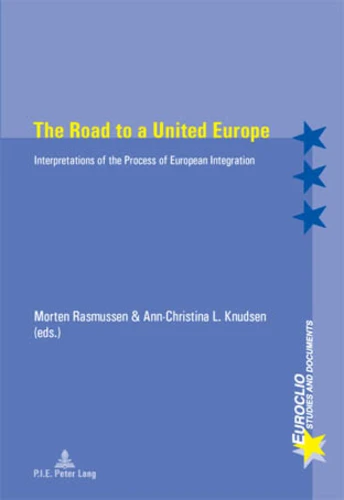The Road to a United Europe. Interpretations of the Process of European Integration
Par : ,Formats :
- Paiement en ligne :
- Livraison à domicile ou en point Mondial Relay indisponible
- Retrait Click and Collect en magasin gratuit
- Nombre de pages380
- PrésentationBroché
- FormatGrand Format
- Poids0.517 kg
- Dimensions15,0 cm × 22,0 cm × 2,0 cm
- ISBN978-90-5201-560-6
- EAN9789052015606
- Date de parution01/05/2010
- CollectionEuroclio. Etudes et documents
- ÉditeurP.I.E. Peter Lang
Résumé
Historical scholarship has for a long time focused on the foreign policy and commercial dimensions of European integration. At a time when the European Union has become increasingly multidimensional, it is appropriate for historians to follow suit in their approach to studying Europe. This book draws upon traditional areas of research, but crucially also breaks new ground, demonstrating the innovative approaches of a new generation of historians.
In the book, twenty-two young scholars explore five different interpretative strands of the study of the history of European integration. The contributors participated in the second RICHIE conference (Réseau international de jeunes chercheurs en histoire de l'intégration européenne, or International Network of Young Researchers in European Integration History), held in Copenhagen in December 2006.
Their work is based on extensive new research into a number of governmental and international archives, as well the archives of several non-governmental organisations and various personal archives.
In the book, twenty-two young scholars explore five different interpretative strands of the study of the history of European integration. The contributors participated in the second RICHIE conference (Réseau international de jeunes chercheurs en histoire de l'intégration européenne, or International Network of Young Researchers in European Integration History), held in Copenhagen in December 2006.
Their work is based on extensive new research into a number of governmental and international archives, as well the archives of several non-governmental organisations and various personal archives.
Historical scholarship has for a long time focused on the foreign policy and commercial dimensions of European integration. At a time when the European Union has become increasingly multidimensional, it is appropriate for historians to follow suit in their approach to studying Europe. This book draws upon traditional areas of research, but crucially also breaks new ground, demonstrating the innovative approaches of a new generation of historians.
In the book, twenty-two young scholars explore five different interpretative strands of the study of the history of European integration. The contributors participated in the second RICHIE conference (Réseau international de jeunes chercheurs en histoire de l'intégration européenne, or International Network of Young Researchers in European Integration History), held in Copenhagen in December 2006.
Their work is based on extensive new research into a number of governmental and international archives, as well the archives of several non-governmental organisations and various personal archives.
In the book, twenty-two young scholars explore five different interpretative strands of the study of the history of European integration. The contributors participated in the second RICHIE conference (Réseau international de jeunes chercheurs en histoire de l'intégration européenne, or International Network of Young Researchers in European Integration History), held in Copenhagen in December 2006.
Their work is based on extensive new research into a number of governmental and international archives, as well the archives of several non-governmental organisations and various personal archives.

